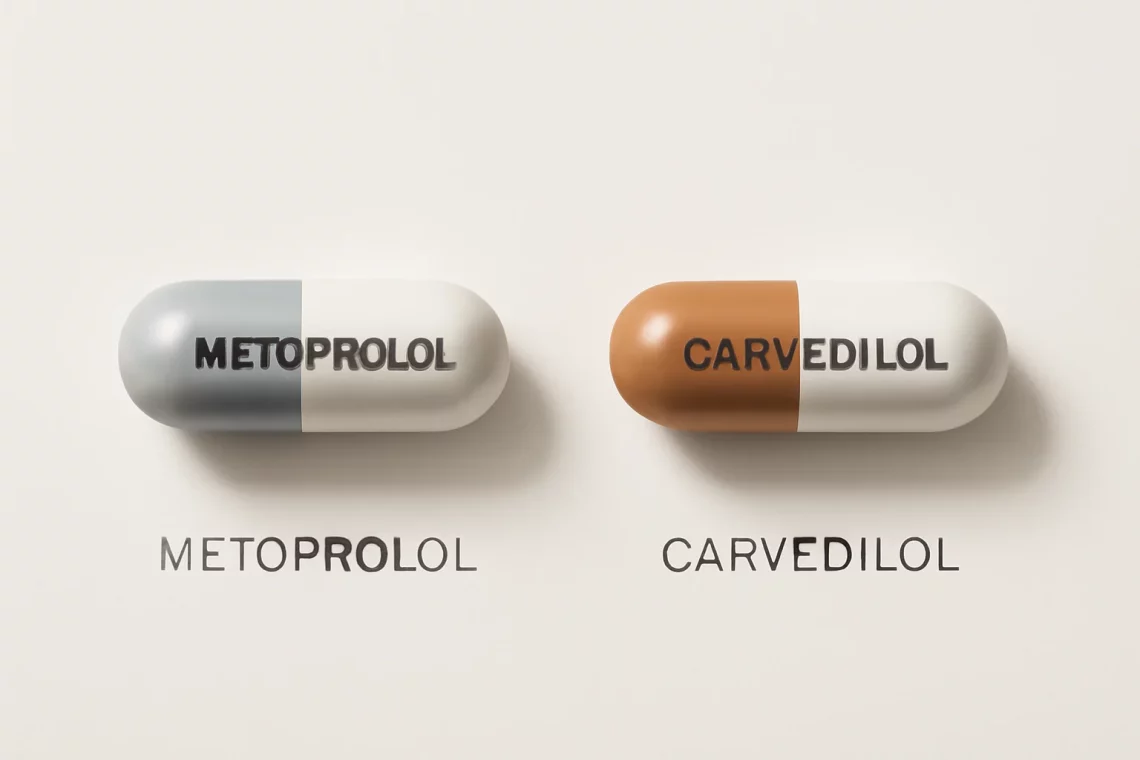-
Nurtec vs Reyvow: A Comprehensive Comparison of Migraine Treatments
Migraine is a debilitating condition that affects millions of individuals worldwide, often hindering their daily activities and overall quality of life. As researchers continue to explore new treatments, two medications have emerged as notable options for acute migraine relief—Nurtec and Reyvow. These medications belong to different drug classes and offer unique mechanisms of action, which can lead to varied experiences for patients. Understanding the differences and similarities between these two drugs is essential for patients and healthcare professionals alike, as it can help guide treatment decisions and optimize patient outcomes. In the world of migraine management, it’s crucial to consider factors such as efficacy, onset of action, side effects, and…
-
Doxycycline vs Cipro: Key Differences and Uses Explained
Doxycycline and Ciprofloxacin are both antibiotics that play significant roles in modern medicine. They are effective in treating a variety of bacterial infections, but they belong to different classes of antibiotics and have distinct mechanisms of action. Understanding the differences between these two medications can help both healthcare providers and patients make informed choices regarding treatment options. Doxycycline, a tetracycline antibiotic, is often used to treat infections such as acne, respiratory tract infections, and certain sexually transmitted infections. It works by inhibiting bacterial protein synthesis, thereby preventing the growth and reproduction of bacteria. On the other hand, Ciprofloxacin, a fluoroquinolone antibiotic, is commonly prescribed for urinary tract infections, gastrointestinal infections,…
-
Amoxicillin vs Bactrim: Which Antibiotic Is Right for You?
Amoxicillin and Bactrim are two commonly prescribed antibiotics that play a crucial role in treating bacterial infections. While both medications aim to combat infections, they belong to different classes of antibiotics and have distinct mechanisms of action. Understanding these differences is essential for both healthcare professionals and patients in order to ensure appropriate treatment choices. Amoxicillin, a penicillin derivative, is widely used for its effectiveness against a variety of bacterial infections, including respiratory tract infections, urinary tract infections, and skin infections. It works by inhibiting bacterial cell wall synthesis, ultimately leading to cell death. Its broad-spectrum activity makes it a go-to option in many clinical situations. On the other hand,…
-
Ozempic vs Rybelsus: Which Diabetes Treatment is Right for You?
Ozempic and Rybelsus are two medications that have gained significant attention in recent years for their role in managing type 2 diabetes. Both of these drugs belong to a class of medications known as GLP-1 receptor agonists, which have been shown to help regulate blood sugar levels effectively. However, despite their similar mechanisms of action, there are distinct differences between the two that can influence a patient’s choice in treatment. As the prevalence of type 2 diabetes continues to rise globally, understanding the options available for managing this condition has never been more crucial. Both Ozempic and Rybelsus offer unique benefits and potential drawbacks, making it essential for patients and…
-
Sublocade vs Naltrexone Which is More Effective for Opioid Addiction?
Sublocade and Naltrexone are two medications that have garnered attention for their roles in the treatment of substance use disorders, particularly opioid dependence. As the opioid crisis continues to affect communities globally, the need for effective treatment options becomes increasingly urgent. Both Sublocade and Naltrexone serve as alternatives to traditional methods of addiction treatment, but they operate through different mechanisms and offer various benefits and challenges. Understanding these differences is crucial for patients and healthcare providers alike, as it can influence treatment decisions and outcomes. In the landscape of addiction treatment, it’s essential to explore how these medications function, their administration methods, potential side effects, and the overall impact they…
-
Metoprolol vs Carvedilol: Which Beta-Blocker is Right for You?
Metoprolol and carvedilol are both medications primarily used to manage cardiovascular conditions, but they belong to different classes of drugs and have distinct mechanisms of action. Understanding their differences, uses, and potential side effects is essential for patients and healthcare providers alike. While both medications are effective at treating high blood pressure, heart failure, and other heart-related issues, they have varying profiles that can make one more suitable than the other depending on individual patient needs. As patients navigate their treatment options, it’s crucial to consider factors such as existing health conditions, potential interactions with other medications, and personal health goals. The choice between metoprolol and carvedilol often comes down…
-
Biktarvy vs Complera: Which HIV Treatment is Right for You?
Biktarvy and Complera are two prominent antiretroviral medications used in the management of HIV infection. As the landscape of HIV treatment continues to evolve, patients and healthcare providers are often faced with the challenge of selecting the most suitable therapy to ensure effective viral suppression while minimizing side effects. Both Biktarvy and Complera have demonstrated efficacy in clinical trials, but they differ in their compositions, mechanisms of action, and dosing regimens. Understanding these differences is crucial for patients who are navigating the complexities of HIV treatment. Factors such as adherence to the medication regimen, potential side effects, and the patient’s overall health condition play significant roles in determining the best…
-
Meloxicam vs Advil: Which Pain Reliever is Right for You?
Meloxicam and Advil are two commonly used medications for pain relief and inflammation reduction. They belong to different classes of drugs and are prescribed or purchased over-the-counter for various conditions, from arthritis to headaches. Understanding the differences between these medications, their mechanisms of action, and potential side effects can help individuals make informed decisions about their pain management options. Meloxicam is a nonsteroidal anti-inflammatory drug (NSAID) primarily used for treating osteoarthritis and rheumatoid arthritis. It works by inhibiting certain enzymes in the body that contribute to inflammation and pain. On the other hand, Advil, which is the brand name for ibuprofen, is a widely recognized over-the-counter NSAID that is commonly…
-
Xanax vs Restoril Understanding Their Uses and Differences
The increasing prevalence of anxiety and sleep disorders has led many individuals to seek pharmacological solutions. Two medications that often come up in discussions about treatment options for these conditions are Xanax and Restoril. Both drugs serve different purposes and have distinct profiles, yet they are frequently compared due to their sedative effects and potential for dependence. Understanding the differences, benefits, and risks associated with each can empower individuals to make informed decisions about their treatment options. Xanax, generically known as alprazolam, belongs to the benzodiazepine class of medications. It is primarily prescribed for anxiety disorders and panic attacks, acting quickly to alleviate symptoms. On the other hand, Restoril, or…
-
Methylphenidate vs Amphetamine: Which is More Effective for ADHD?
Methylphenidate and amphetamine are two commonly prescribed medications primarily used to treat Attention Deficit Hyperactivity Disorder (ADHD). Both substances belong to a class of drugs known as stimulants, which work by increasing the levels of certain neurotransmitters in the brain, thereby enhancing focus and reducing impulsivity. Despite their similar purposes, methylphenidate and amphetamine have different chemical structures and mechanisms of action, leading to variations in their effects, side effects, and suitability for different patients. The choice between methylphenidate and amphetamine can depend on several factors, including a patient’s medical history, their response to previous treatments, and potential side effects. Understanding the nuances of these medications can help patients, caregivers, and…







































